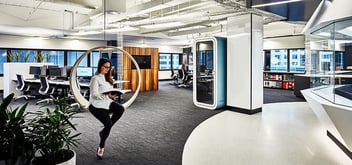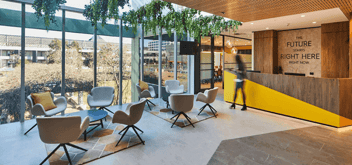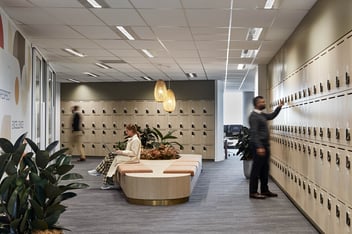
How to future-proof your workplace design

In 2025, employers and employees are on the verge of a transformative shift in their relationship. This change is largely driven by the evolving landscape of where and how people work. Back in 2019, a staggering 60% of employees with remote capabilities were confined to working solely on-site throughout the week. However, fast forward to 2025 and that figure has dramatically dropped to a mere 20%. But there's more to this story than meets the eye.
According to Gallup's research, half of all employees are fully on-site in roles that cannot be done remotely or in a hybrid manner. Surprisingly, the study also reveals that how employees are managed has a fourfold greater impact on their engagement and well-being than their physical work location. This suggests that the relationships employees have with their colleagues, supervisors, leaders, and the organization itself are undergoing significant changes.
Many organisations are radically retooling the ways they do business, leaving many employees, including managers, stressed and disconnected.
Research consistently shows that happy employees are 20% more productive, and highly engaged teams can boost profitability by 21%, according to Gallup. To navigate the evolving landscape of work by preparing workplace for the future, it is imperative for companies to future-proof their workplace strategies and designs. Here are some key considerations to ensure efficiency, productivity, and profitability in the years to come:
1. **Strategic Planning:**
- Develop a comprehensive workplace strategy based on an understanding of how people work and how the workplace can support their needs.
- Gather and collate employee insights to tailor the workplace design, fit-out, and furniture to enhance productivity and employee experiences.
2. **Future Business Plans:**
- Align workplace design with the overarching business objectives and future plans.
- Anticipate challenges and changes in the business landscape, ensuring the workplace design remains adaptable.
3. **Employee Wellbeing:**
- Prioritise the health and wellbeing of employees by integrating ergonomic designs and movement-friendly features.
- Incorporate researched data on employe into your workplace strategy to enhance workplace satisfaction and reduce stress.
4. **Flexible Workspaces:**
- Promote and facilitate flexible working practices to enhance work-life balance and increase productivity.
- Embrace blended offices with activity-based designs, accommodating different working styles and fostering a sense of community.
5. **Performance-Boosting Technology:**
- Stay abreast of rapidly evolving office technology to enhance workplace efficiency.
- Integrate technology seamlessly into the environment based ensuring a smooth workflow for employees in and out of the office.
6. **Consulting Workplace Design Experts:**
- Recognise the need for expertise in navigating the dynamic changes in workplace design.
- Consider partnering with workplace design experts like Axiom, for a holistic approach that aligns with key business objectives.
In a world where workplaces are undergoing accelerated change due to innovative technologies, shifting demographics, and evolving work styles, businesses must continually explore and implement strategies to future-proof their workplaces. By leveraging these considerations, companies can create environments that stand the test of time and contribute to sustained success in 2024 and beyond. If you aspire to achieve a future-proofed workplace design that aligns with your business goals, collaborating with experienced workplace design partners is a strategic step forward.





